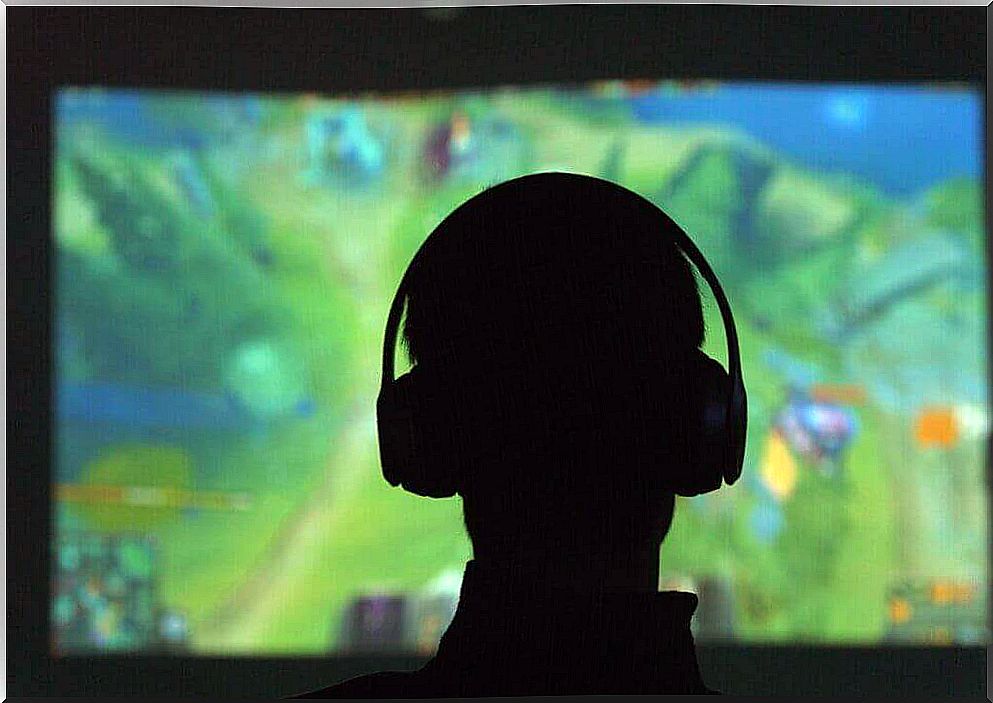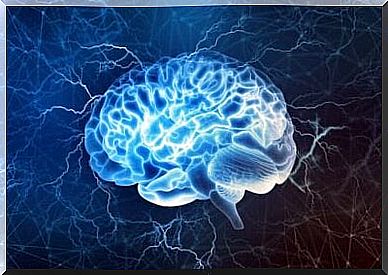Why Do Teens Need So Much Sleep?

When teens sleep in until noon, their parents see it as laziness and slackness, a lack of plans or even a sign of depression. This strong need for sleep in adolescents goes hand in hand with other habits. For example: the fact that they do not tidy their room or that they leave their things lying around.
Laziness usually causes anger in parents. Even more so when their children complain when they try to wake them up before noon. They then see them reluctantly sitting at the table, on weekends to eat with their family, with disheveled hair and pillow marks on their faces.
What many parents don’t know is that it’s absolutely normal for teens to get a lot of sleep. Indeed, it is part of a series of behaviors described in the specialized books on adolescence. Let’s see this in more detail.

Hormones and Screens Affect Teenage Sleep
The hormonal surge in adolescent boys triggers a whole series of changes. In particular, it produces alterations in the sleep cycle. His brain undergoes changes around the age of 11 or 12. It is then the testosterone receptors that modify the circadian rhythm.
Therefore, the teenager goes to bed later and he also gets up later. So, sleeping until noon or even later is not so much a matter of laziness or carelessness, but the hallmark of hormonal activity in one’s body.
Abuse of screens
In addition to hormones, another element contributes to this disruption of the circadian rhythm : the use and abuse of screens. Numerous studies on the use of electronic devices describe the consequences of exposure to screens.
These are video games, consoles, cell phones and even tablets on which teenagers spend hours and hours. These consequences range from addiction to attention disorders.
Often, after school and after finishing their homework, children throw themselves at their screens and stay up late at night. Result: few hours of sleep. It is not uncommon for adolescents to sleep only six hours when their development would require at least ten hours of rest.
Video games are fast paced, full of action, color, competition, with multiple opponents and lots of stimulation. Video games accelerate adrenaline, cortisol and dopamine. This has the effect of bringing dynamism, excitement and pleasure.
Artificial light from screens decreases the amount of melatonin secreted. The latter is essential to promote sleep. For all of these reasons, teens don’t feel the need to fall asleep when they should.
Without even considering the screen problem, classes should start later in middle and high school. Such a change would better respect their chronobiology and would also allow them to make learning more effective.
Lack of control
In addition to all of this, there is another important factor to take into account. Teens have no control over their own limits. Therefore, they do not know when it is good to stop gambling or surf the internet and go to rest.
It is therefore the parents who must fulfill this role. Parents must impose strict rules on them and instruct them to what extent it is possible to reasonably use video game consoles, computers and screens in general.
Just like testosterone in boys, estrogen turns emotions upside down in girls. It also affects their cognitive functions and their bodies in various ways, including sleep.
Estrogen receptors are then activated in brain cells. They act on the suprachiasmatic nucleus and control hormones, regulate mood, sleep and body temperature.
Thus, estrogen not only influences the brain cells that control breathing, it also activates the sleep rhythm and growth hormone in girls. It is between the ages of 8 and 10 that girls begin to see their sleep patterns changed.
The role of the pineal gland in regulating sleep in adolescents
The suprachiasmatic nucleus regulates the circadian rhythm thanks to melatonin. This is done through the pineal gland, which is made up of neurons located in the central part of the median hypothalamus.
The suprachiasmatic nucleus is the internal or endogenous clock that receives information from ambient light picked up by the eyes in the retina. Remember that the retina contains what are called photoreceptors. These allow us to distinguish shapes and colors.
The retina also houses ganglion cells which have a pigment called melanopsin. It carries information to the suprachiasmatic nucleus through the retino-hypothalamic tract.
The suprachiasmatic nucleus therefore collects this information relating to the day-night cycle. He interprets it and sends it to the superior cervical ganglion. From there, the signal is redirected to the pineal gland. It is the latter which finally secretes the hormone of melatonin. The secretion of melatonin is then weak during the day, but it increases during the night.
Serotonin is linked with melatonin. Serotonin is a neurohormone associated with calm and well-being. Thus, the more relaxed and in a good mood we are before going to bed, the more melatonin production will be encouraged.
On the other hand, in the event of emotional stress, it is the cortisol which will be mainly secreted. Unlike serotonin, cortisol delays the onset of melatonin. Getting to sleep then becomes more difficult. When adolescents are excited by video games at night, cortisol predominates and slows the onset of sleep.

The links between brain waves and sleep in children and adolescents
Research has shown that at age 9, the brains of girls and boys have identical brain waves during sleep. However, at age 12, girls’ brain waves change by 37% compared to boys during sleep (Brizendine, 2006).
Scientists have concluded that girls ‘brains change faster than boys’ brains. Campbell points out that the reduction of additional synapses in girls’ brains starts earlier than in boys. This accelerates the growth of brain circuits.
Another important detail concerns the circadian rhythm. This detail relates to the regulation exerted by cortisol in the body.
- Some people have a daytime rhythm. They are distinguished by the fact that they get up naturally early. They usually have a hard time going to bed late when partying at night.
- There are also night owls capable of sleeping until noon or more, and which start their day at night.
Sleeping until noon or later is not always an act of wandering
Taking the above into account, we now know that teenagers should not always be considered “lazy” because they sleep until noon or more. There are some biological realities that cannot be ignored because we would go against our nature.
However, beyond everyone’s nature, there are also girls and boys who are listless, lazy and irresponsible. Indeed, neither hormones, nor the use of a screen until late at night can justify everything.
It is therefore essential to analyze each situation on a case-by-case basis. Depending on the situation, parents may or may not have to set limits, control and supervise the use of screens in their teens.
Sleeping until noon is not a crime. In particular, when this happens occasionally or rarely. On the other hand, if this happens on a recurring basis, it is obviously necessary to start to see what may be the cause and to take the appropriate measures to remedy it.










